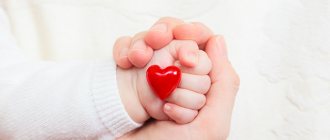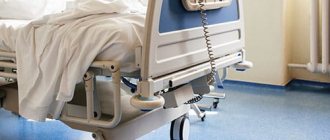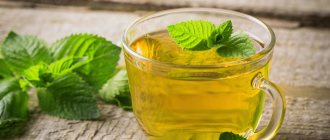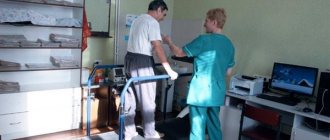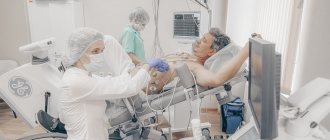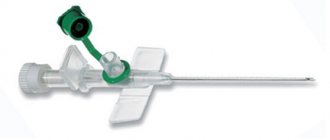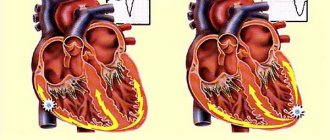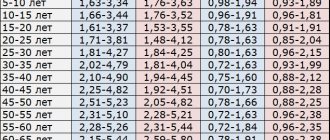When should you take the Stress Complex test?
- Assessing the state of the body during stress.
- Neurological pathology (hyperexcitability, tremor, convulsions, muscle hypotension).
- Depression.
- Atherosclerosis and related diseases of the cardiovascular system: coronary heart disease, myocardial infarction (risk assessment, diagnosis, prognosis).
- Long-term monitoring of the course and control over the treatment of patients with diabetes mellitus to determine the degree of compensation of the disease.
- Emotional stress.
Stress in modern society
A clear illustration of the effect of stress on the development of cardiovascular diseases is mortality statistics for the 1990s in Russia. The first peak in the increase in mortality
occurred in 1991-92, and the second in 1998. These peaks fit very well with the chronology of the political and economic development of the country itself. The collapse of the USSR in the early 1990s resulted in a sharp increase in emotional and mental stress and, as a result, an increase in mortality. A similar situation was observed in 1998. “Of course, it is impossible to say that all deaths during this period were the result of cardiovascular diseases,” Boytsov notes, “but their percentage was very high.”
Detailed description of the study
Nervous stress, insomnia, loss of energy, and depressed mood are common problems that a person faces due to stress during self-isolation within four walls. They can occur for various reasons. Lack of sunlight can lead to a decrease in vitamin D levels, which entails a deficiency of the “joy hormone” serotonin, melancholy, and leaching of calcium and magnesium from the body. A lack of magnesium, in turn, prevents the nervous system from calming down and can cause anxiety and insomnia.
Another negative factor is problems with the thyroid gland, which can be detected by determining the TSH level. With thyroid hyperfunction, general nervous excitement increases, but concentration decreases, sudden mood swings and insomnia appear. With insufficient thyroid function, apathy, constant drowsiness, weight gain, loss of libido, and extremely low performance may be observed.
Cortisol is a stress hormone. The higher the stress level, the higher the level. The longer the high level of this hormone remains, the more severe the consequences for the body: this is not only overeating, excess weight, insomnia, but also an increasing risk of heart attacks and strokes, especially with a high atherogenic index.
The complex will allow you to identify areas of greatest risk and take the necessary measures in a timely manner. Perhaps to reduce stress levels it will be enough to take a course of simple vitamins.
Vitamin D – Affects the synthesis of the neurotransmitters dopamine and serotonin, whose low levels are associated with depression. A decrease in the synthesis of Vitamin D affects the functioning of the nervous system, reducing stress resistance.
Vitamin D is very important in difficult times of pandemic and self-isolation. Vitamin D increases the ability of immune cells to cope with viruses. Scientists talk about a clear dependence of the severity of viral infections (including COVID-19) on the level of vitamin D in the body [1]! During the winter period, the level of vitamin D for many people drops - it is produced in the skin under the influence of sunlight, which is not enough during the cold season.
Magnesium is one of the key inorganic components in the body, affects the state of the nervous system, and is extremely important in regulating the neuromuscular activity of the heart.
General calcium is an essential trace element involved in the construction of the skeleton, heart function, neuromuscular activity, blood clotting and many other processes.
Cortisol is a hormone whose levels increase during stressful situations. This entails an increase in the level of adrenaline and glucose in the blood, and an increase in blood pressure.
TSH is the main indicator for assessing the condition of the thyroid gland, the pathologies of which are the second most common after diabetes mellitus.
The atherogenic index is an indicator that reflects the degree of risk of developing heart and vascular disease.
Atherogenic coefficient is the ratio of “bad” cholesterol to “good” cholesterol, characterizing the risk of developing cardiovascular diseases.
Cholesterol (CH) is a fat-like substance vital to the body. The most important indicator of lipid metabolism. It is involved in the formation of cell membranes of all organs and tissues of the body. Serves as the basis for the synthesis of sex hormones. Bile acids are formed from it, thanks to which fats are absorbed in the intestines.
HDL is called “good” cholesterol because it removes excess amounts of low-density cholesterol from the walls of blood vessels.
In the development of atherosclerotic plaques in blood vessels, not only an increase in the total amount of cholesterol in the blood is important, but also the ratio between “bad” and “good” cholesterol. This is what the atherogenicity coefficient reflects.
Urine tests:
General urine analysis
- On the eve of the test, it is recommended not to eat vegetables and fruits that can change the color of urine (beets, carrots, etc.), and not to take diuretics.
- Before collecting urine, it is necessary to perform a thorough hygienic toilet of the genitals.
- Women are not recommended to take a urine test during menstruation.
Collect your morning urine in a container. To properly conduct the study, during the first morning urination, release a small amount of urine (the first 1 - 2 seconds) into the toilet, and then, without interrupting urination, place a urine collection container into which to collect approximately 50-100 ml of urine. Close the container tightly with the screw cap.
A specialized plastic container is the optimal means of collecting and transporting urine for laboratory research. Ask at pharmacies. The container is a wide-neck graduated translucent glass with a capacity of 125 ml with a hermetically screw-on lid. The container is sterile, does not require pre-treatment and is completely ready for use.
Nechiporenko test
To analyze urine using the Nechiporenko method, the morning portion is collected in the middle of urination (“middle portion”). 15-25 ml is enough.
24-hour urine collection
For laboratory studies, in the morning before collecting urine, it is necessary to toilet the external genitalia.
The first morning urine sample is not collected, but the time of urination is noted. Subsequently, all urine excreted in 24 hours from the marked time of the first urination to the same hour the next day is collected.
The collection of daily urine is optimally carried out in a specialized graduated plastic container of 2.7 liters, which has a wide neck and a textured handle. The container is safe and easy to handle.
You should urinate directly into the container and screw the lid tightly after each urination. Urine should be stored in a closed container in the refrigerator on the bottom shelf, avoiding freezing.
At the end of the collection (the last urination is performed at the same time, which is marked as the time of the first urination, but one day later), the urine can be submitted to the laboratory: the daily volume of urine in a closed container is shaken, after which it is poured into a small container for clinical urine analysis of 125 ml 100 ml portion. You don't need to bring all your urine. At the medical center, report the daily amount of urine.
Collection of daily urine according to Zimnitsky
Urine is collected per day (8 servings in 8 containers, every 3 hours). The first portion of urine in the morning is removed. All subsequent portions of urine excreted during the day, night and the morning portion of the next day are collected in different containers (50 ml) purchased at the pharmacy, each with the time of collection signed.
After collecting urine, accurately measure the contents of the container, be sure to mix it and immediately pour it into a container purchased at the pharmacy. Bring the container to the medical center for examination. You don't need to bring all your urine. At the medical center, report the daily amount of urine.
Urine for sugar
From the daily amount of urine, 50-100 ml of urine or 3 portions of urine collected per day with intervals of 8 hours are delivered to the laboratory:
1 serving - from 8 to 16 hours
2 servings - from 16 to 24 hours
3 servings - from 24 to 8 am (as directed by a doctor).
Urine for PCR studies (tuberculosis, CMV, STIs)
Before collecting urine, it is necessary to toilet the external genitalia. Urine is collected in the morning on an empty stomach after sleep or no earlier than 2-3 hours after the last urination into a sterile plastic container. The minimum volume of urine required for analysis is 20 ml.
Urine for bacteriological research
The urine sample is collected only in a sterile container.
Urine must be collected before starting antibacterial treatment or 3 days after therapy. If the patient is taking antibacterial drugs, then it is necessary to decide on their temporary withdrawal.
After thoroughly toileting the external genitalia, flush the first portion of urine into the toilet, collect the middle portion of 3-5 ml in a sterile hermetically sealed container. Deliver the urine to the laboratory within 1-2 hours; if this is not possible, then the urine sample can be stored in the refrigerator for no more than a day. When transporting the sample, care must be taken to ensure that the stopper does not get wet.
How to deal with the effects of stress?
Learn the correct response to a stressful situation so that the body's reaction to stress is minimal. Some people are quite calm due to their temperament. But very emotional people who react sharply to the slightest shock in life should visit a psychologist
or psychotherapist.
The specialist will teach you how to manage your reaction to life’s collisions. In addition, get out of stress correctly if it does occur. If it is possible to perform physical exercises
immediately after a stressful situation, the body mobilized to fight will receive the necessary release. It’s hard to imagine an office worker who, after being scolded by management, left the office and went for a run. But there is always the possibility of some kind of physical activity - run up the stairs, do a few push-ups or pull-ups. After this, the body's reaction to stress will be much easier.
What's wrong with stress
In general, stress in itself is not dangerous. It helps us mobilize in difficult situations and solve them with minimal losses or without them at all. The problem is that there is too much of it in modern life. The current generation is much closer to the possibility of having a heart attack from stress, since there are many more factors that cause it. Starting from the crazy pace of life, the need to constantly compete at school, university and at work in order to achieve something, and ending with problems in personal life and internal personal conflicts. All this leads to the fact that stress becomes a constant companion of a person. And its long-term influence triggers destructive processes in the body.
The whole problem is in the stool
For our ancestors, stress in most cases was caused by a collision with some kind of literal danger: a hostile tribe or a predatory animal. Therefore, first of all, the processes in the body launched at this moment are aimed at ensuring that a person can escape from danger or fight until victory, saving his life. This reaction is known to everyone as “fight or flight”. And to this day, these remain the main strategies of our body in a stressful, that is, potentially dangerous, situation. This is why when a person is nervous, it is very difficult for him to sit still. All body systems are on edge and ready for an immediate reaction. After a person has escaped or defended himself in battle, relaxation and restoration of strength occurs. But in modern conditions we do not run away and do not fight. There are often situations when we have to silently swallow all our dissatisfaction, without giving an outlet to stress. And then he “tears” us from the inside.
Therefore, the best way to calm down and prevent stress from having a negative impact on the body is to get up from a chair, sofa, armchair and walk, jog, squat, jump, and so on. Anything to end the hit and run cycle. Then you can relax and recuperate. Regular exercise or at least walking is a great way to prevent stress from causing a myocardial infarction.
